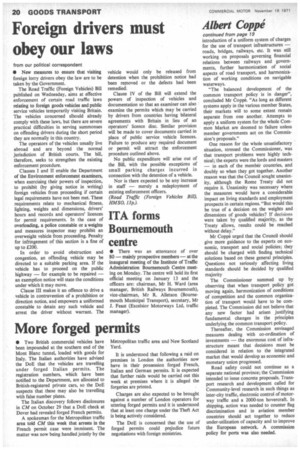Albert Coppe
Page 22

If you've noticed an error in this article please click here to report it so we can fix it.
continued from page 19 introduction of a uniform system of charges for the use of transport infrastructures — roads, bridges, railways, etc. It was still working on proposals governing financial relations between railways and governments, further harmonization of social aspects of road transport, and harmonization of working conditions on navigable waterways.
The balanced development of the common transport policy is in danger", concluded Mr Coppe. "As long as different systems apply in the various member States, their markets will to some extent remain separate from one another. Attempts to apply a uniform system for the whole Common Market are doomed to failure unless member governments act on the Commission's proposals."
One reason for the whole unsatisfactory situation, stressed the Commissioner, was that transport problems were highly technical; the experts were the lords and masters — in each of the member countries, and doubly so when they got together. Another reason was that the Council sought unanimity, although the Rome Treaty did not require it. Unanimity was necessary where the measures would have a considerable impact on living standards and employment prospects in certain regions. "But would this be true of a decision on the weights and dimensions of goods vehicles? if decisions were taken by qualified majority, as the Treaty allows, results could be reached without delay."
Mr Coppe urged that the Council should give more guidance to the experts on economic, transport and social policies; they should be charged with finding technical solutions based on these general principles. Questions not seriously affecting living standards should be decided by qualified majority The Commissioner summed up by observing that when transport policy got moving again, harmonization of conditions of competition and the common organization of transport would have to be completed. The Commission did not believe that any new factor had arisen justifying fundamental changes in the principles underlying the common transport policy.
Thereafter. the Commission envisaged measures dealing with co-ordination of investments — the enormous cost of infrastructure meant that decisions must be considered in relation to the integrated market that would develop as economic and monetary union progressed.
Road safety could not continue as a separate national province; the Commission intended to issue concrete proposals. Transport research and development called for Community-level research in such things as inter-city traffic, electronic control of motorway traffic and a 2000-ton hovercraft. In shipping, action was needed to counter flag discrimination and in aviation member countries should act together to reduce under-utilization of capacity and to improve the European network. A commission policy for ports was also needed.




















































































































